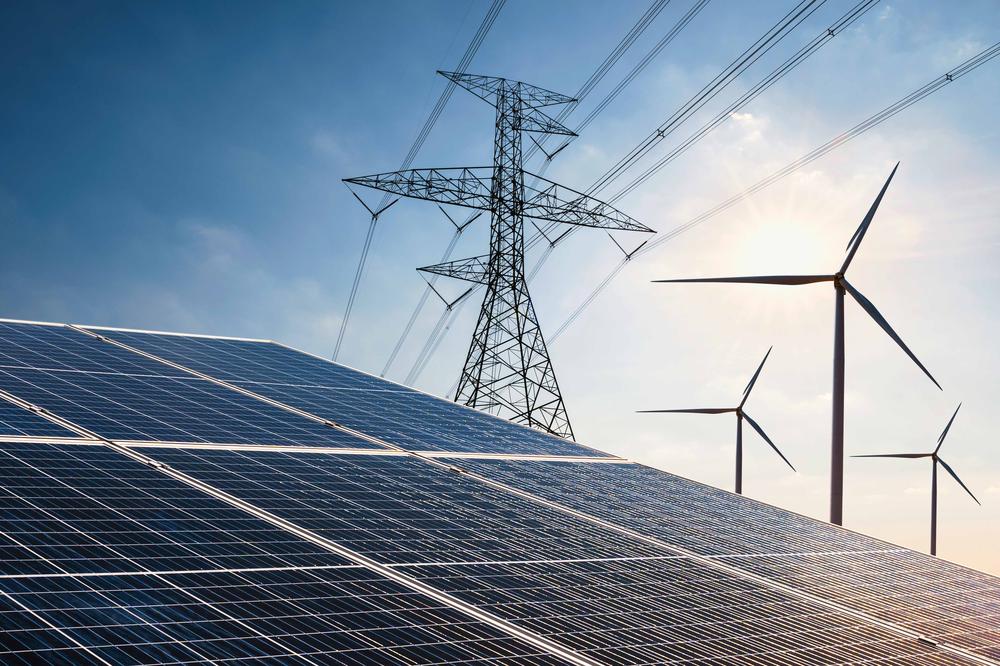
The B2B platform for the best purchasing descision. Identify and compare relevant B2B manufacturers, suppliers and retailers
Close
Filter
Result configuration
Continents
Select continent
Locations
Result types
Company type
Select company type
Industries
Select industry
Company status
Select company status preset
Number of employees
Min.
Max.
Founding year
CarbonStore
Stirling, United Kingdom
A
251-500 Employees
2020
Key takeaway
CarbonStore plays a crucial role in the carbon storage sector by connecting landowners with companies seeking to purchase certified Woodland and Peatland Carbon Units. Their collaboration with partners like Tilhill and Maelor Forest Nurseries ensures high standards in creating new woodlands and restoring peatlands, thereby helping organizations offset their carbon emissions and achieve climate change goals.
Reference
Service
Services - CarbonStore
Lorem ipsum dolor sit amet, consectetur adipiscing elit, sed do eiusmod tempor incididunt ut labore et dolore magna aliqua.
Carbonsate
Berlin, Germany
A
1-10 Employees
2022
Key takeaway
Carbonsate is a leader in Carbon Dioxide Removal (CDR) through its innovative Terrestrial Biomass Storage technology, which captures and sequesters carbon dioxide effectively. By using natural processes like photosynthesis and storing waste wood in the ground, Carbonsate not only prevents climate disaster but also supports biodiversity and offers valuable environmental benefits.
Reference
Core business
Carbonsate - Carbon Dioxide Removal
Achieve your climate goals with Carbon Dioxide Removal (CDR) credits. Carbonsate paves the way for scalable Carbon Dioxide Removal (CDR) through innovative Terrestrial Biomass Storage technology.
CarStorCon® Technologies
Osteel, Germany
A
1-10 Employees
2021
Key takeaway
CarStorCon® Technologies specializes in carbon storage through its innovative incorporation of technical carbon into concrete, making building materials climate-positive and reducing their carbon footprint. This approach not only addresses the need for sustainable construction but also positions their products as a means to store more CO2 than is emitted during production.
Reference
Core business
Reduction of the carbon footprint of concrete and asphalt with CarStorCon®.
Clim@Add® technology from CarStorCon® makes building materials climate positive and reduces the carbon footprint of concrete and asphalt
Looking for more accurate results?
Find the right companies for free by entering your custom query!
25M+ companies
250M+ products
Free to use
InCapture
Australia
A
11-50 Employees
2022
Key takeaway
InCapture is focused on carbon storage, utilizing its extensive geological and geophysical data to identify suitable sites for carbon dioxide sequestration. Their commitment to sustainable practices and contribution to net-zero goals positions them as key developers in the carbon storage sector.
Reference
Core business
Home Page - incapture
CarbonSpaceTech
Dublin, Ireland
A
11-50 Employees
2020
Key takeaway
The company focuses on carbon emissions and sequestration from various land uses, including farms, fields, and forests.
Reference
Product
CarbonSpace | Data
CARBON MARKET DATA LTD.
London, United Kingdom
A
1-10 Employees
-
Key takeaway
Carbon Market Data has launched the Corporate Carbon Database, a comprehensive tool that provides valuable information on carbon footprints and trading schemes. This innovative solution supports organizations in understanding and navigating the carbon market, highlighting their commitment to addressing carbon storage and emissions reduction.
Reference
Product
World Carbon Market Database
Carbon Market Data
London, United Kingdom
A
1-10 Employees
2006
Key takeaway
Carbon Market Data has launched the Corporate Carbon Database, a comprehensive tool that provides valuable information on carbon footprints and trading schemes. This innovative solution supports organizations in understanding and navigating the carbon market, highlighting their commitment to addressing carbon storage and emissions reduction.
Reference
Product
World Carbon Market Database

The Carboncoin Trust
East Suffolk, United Kingdom
A
11-50 Employees
2014
Key takeaway
Carboncoin is an energy-efficient digital currency that addresses environmental concerns by minimizing unnecessary electricity use in its operations and actively supporting tree planting initiatives. This focus on sustainability aligns with the growing interest in carbon storage and environmental impact.
Reference
Core business
Carboncoin
Carbon Sequestration Inc.
Houston, United States
B
1-10 Employees
2019
Key takeaway
Carbon Sequestration Inc. (CSI) is at the forefront of carbon removal and storage, utilizing specially engineered underground clay vaults in East Texas to permanently trap and store woody biomass. Their innovative Terrestrial Storage of Biomass (TSB) approach effectively moves carbon from a fast decay cycle into a slow cycle, mimicking natural coal formation conditions.
Reference
Core business
About Us — Carbon Sequestration Inc.
Carbon GeoCapture
Laramie, United States
B
1-10 Employees
2016
Key takeaway
The company focuses on capturing and storing carbon dioxide from various emission sources, including power plants and hard-to-decarbonize industries, as well as utilizing emerging direct air capture technologies to permanently store carbon underground. Their commitment to carbon capture and storage is integral to managing carbon emissions effectively.
Reference
Core business
Carbon GeoCapture
Technologies which have been searched by others and may be interesting for you:
Carbon storage refers to the process of capturing and securely storing carbon dioxide (CO2) emissions that would otherwise enter the atmosphere. This technology plays a crucial role in mitigating climate change by preventing CO2 from contributing to global warming. Typically, carbon storage involves capturing CO2 from industrial processes or power generation and then transporting it to underground geological formations where it can be contained safely. The storage sites are selected based on their geological characteristics, ensuring that the CO2 remains trapped for the long term. By utilizing carbon storage, industries can significantly reduce their carbon footprint while continuing operations, making it an essential strategy in the transition to a low-carbon economy.
Carbon storage plays a crucial role in mitigating climate change by capturing carbon dioxide (CO2) emissions from sources like power plants and industrial processes. By preventing this greenhouse gas from entering the atmosphere, carbon storage significantly reduces the overall carbon footprint of these operations. In addition, the technology helps in achieving net-zero emissions by allowing for the continued use of fossil fuels in a more sustainable manner. By storing CO2 underground or in other secure environments, it prevents potential environmental harm while enabling a transition to cleaner energy sources. This process is vital for meeting international climate goals and fostering a sustainable future.
Various technologies are employed in carbon storage to effectively capture and store carbon dioxide emissions. One prominent method is Carbon Capture and Storage (CCS), which involves capturing CO2 emitted from sources like power plants and industrial processes, then transporting it to a storage site. Another significant approach is Direct Air Capture (DAC), where CO2 is extracted directly from the atmosphere. This technology utilizes chemical processes to separate CO2 from air, allowing for its subsequent storage or utilization. Additionally, Geological Storage is commonly used, where captured carbon is injected deep underground into rock formations, ensuring long-term containment.
Carbon storage plays a crucial role in mitigating climate change by capturing and storing carbon dioxide emissions from industrial processes and power generation. One significant benefit is the reduction of greenhouse gases in the atmosphere, which helps to stabilize global temperatures and minimize the impact of climate change. Furthermore, effective carbon storage can enhance energy security by allowing for the continued use of fossil fuels while limiting their environmental impact. This technology also fosters economic opportunities by creating jobs in carbon capture, transportation, and storage facilities, ultimately contributing to a more sustainable future.
Carbon storage faces several challenges that can impact its effectiveness and implementation.
1. Technical Limitations
The technology for capturing and storing carbon dioxide is still evolving. Ensuring that the captured carbon remains securely stored underground for long periods is crucial. There are concerns about potential leaks that could negate the benefits of carbon storage.
2. Economic Viability
The costs associated with carbon capture and storage can be significant. Developing the infrastructure necessary for effective storage can be a financial burden. Additionally, the market for carbon credits and incentives can fluctuate, affecting investment in these technologies.
3. Regulatory and Public Acceptance
Navigating the regulatory landscape is complex, as policies vary widely across regions. Public perception of carbon storage projects can also be a hurdle, with concerns about environmental impact and safety influencing community acceptance.
4. Infrastructure Needs
Existing infrastructure may not be adequate for transporting captured carbon to storage sites. Developing new pipelines and facilities requires substantial investment and planning, complicating project timelines and feasibility.
Some interesting numbers and facts about your company results for Carbon Storage
| Country with most fitting companies | United Kingdom |
| Amount of fitting manufacturers | 4634 |
| Amount of suitable service providers | 4700 |
| Average amount of employees | 1-10 |
| Oldest suiting company | 2006 |
| Youngest suiting company | 2022 |
20%
40%
60%
80%
Some interesting questions that has been asked about the results you have just received for Carbon Storage
What are related technologies to Carbon Storage?
Based on our calculations related technologies to Carbon Storage are Water/Ocean Cleaning Technologies, Waste Management, Renewable Energy, Sustainable Fashion, Smart Grid
Who are Start-Ups in the field of Carbon Storage?
Start-Ups who are working in Carbon Storage are Carbonsate, CarStorCon® Technologies, InCapture
Which industries are mostly working on Carbon Storage?
The most represented industries which are working in Carbon Storage are IT, Software and Services, Oil, Energy and Gas, Other, Environment, Disposal and Recycling, Logistics, Supply Chain and Transportation
How does ensun find these Carbon Storage Companies?
ensun uses an advanced search and ranking system capable of sifting through millions of companies and hundreds of millions of products and services to identify suitable matches. This is achieved by leveraging cutting-edge technologies, including Artificial Intelligence.